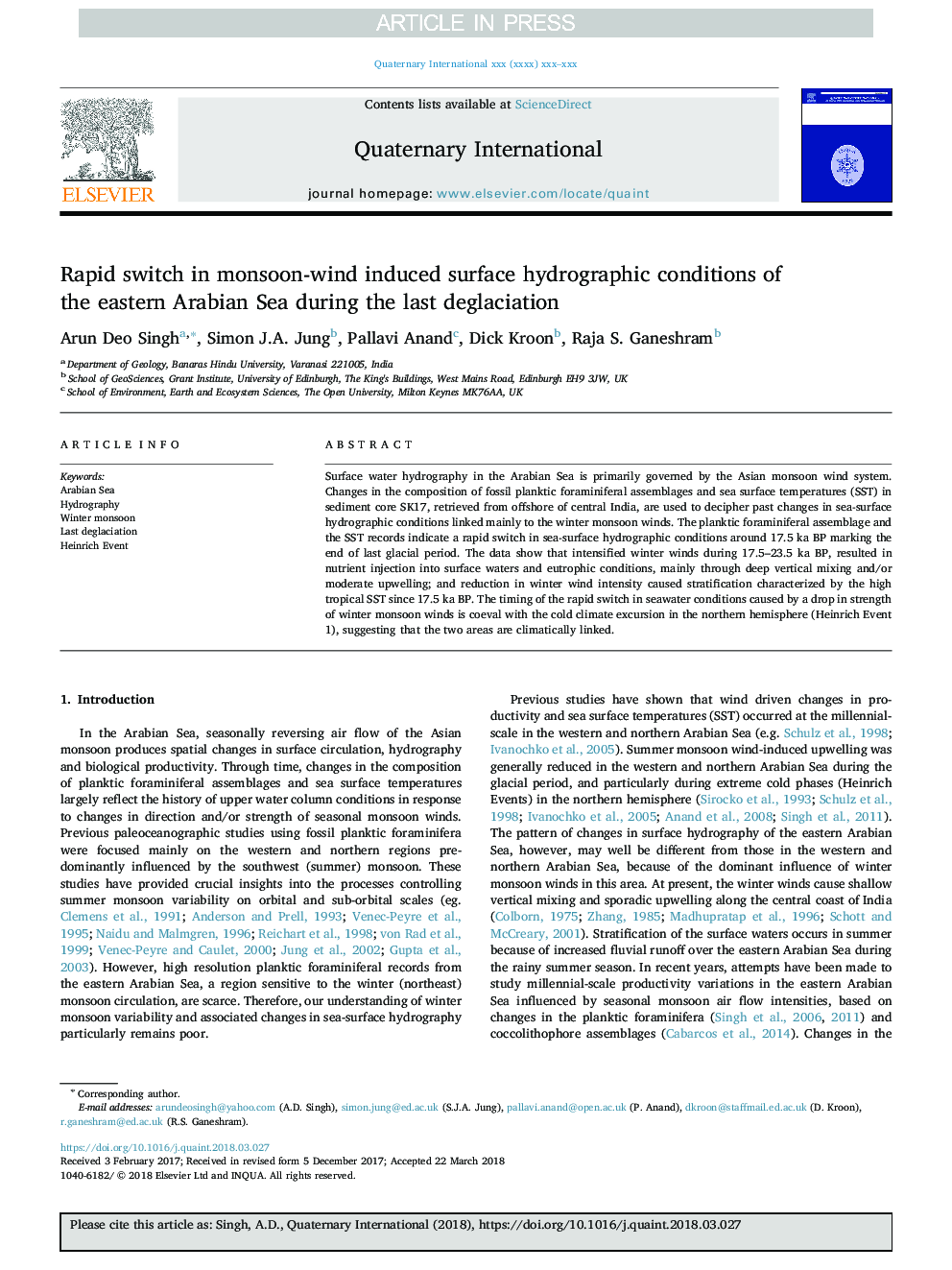| Article ID | Journal | Published Year | Pages | File Type |
|---|---|---|---|---|
| 7449364 | Quaternary International | 2018 | 9 Pages |
Abstract
Surface water hydrography in the Arabian Sea is primarily governed by the Asian monsoon wind system. Changes in the composition of fossil planktic foraminiferal assemblages and sea surface temperatures (SST) in sediment core SK17, retrieved from offshore of central India, are used to decipher past changes in sea-surface hydrographic conditions linked mainly to the winter monsoon winds. The planktic foraminiferal assemblage and the SST records indicate a rapid switch in sea-surface hydrographic conditions around 17.5 ka BP marking the end of last glacial period. The data show that intensified winter winds during 17.5-23.5 ka BP, resulted in nutrient injection into surface waters and eutrophic conditions, mainly through deep vertical mixing and/or moderate upwelling; and reduction in winter wind intensity caused stratification characterized by the high tropical SST since 17.5 ka BP. The timing of the rapid switch in seawater conditions caused by a drop in strength of winter monsoon winds is coeval with the cold climate excursion in the northern hemisphere (Heinrich Event 1), suggesting that the two areas are climatically linked.
Related Topics
Physical Sciences and Engineering
Earth and Planetary Sciences
Geology
Authors
Arun Deo Singh, Simon J.A. Jung, Pallavi Anand, Dick Kroon, Raja S. Ganeshram,
